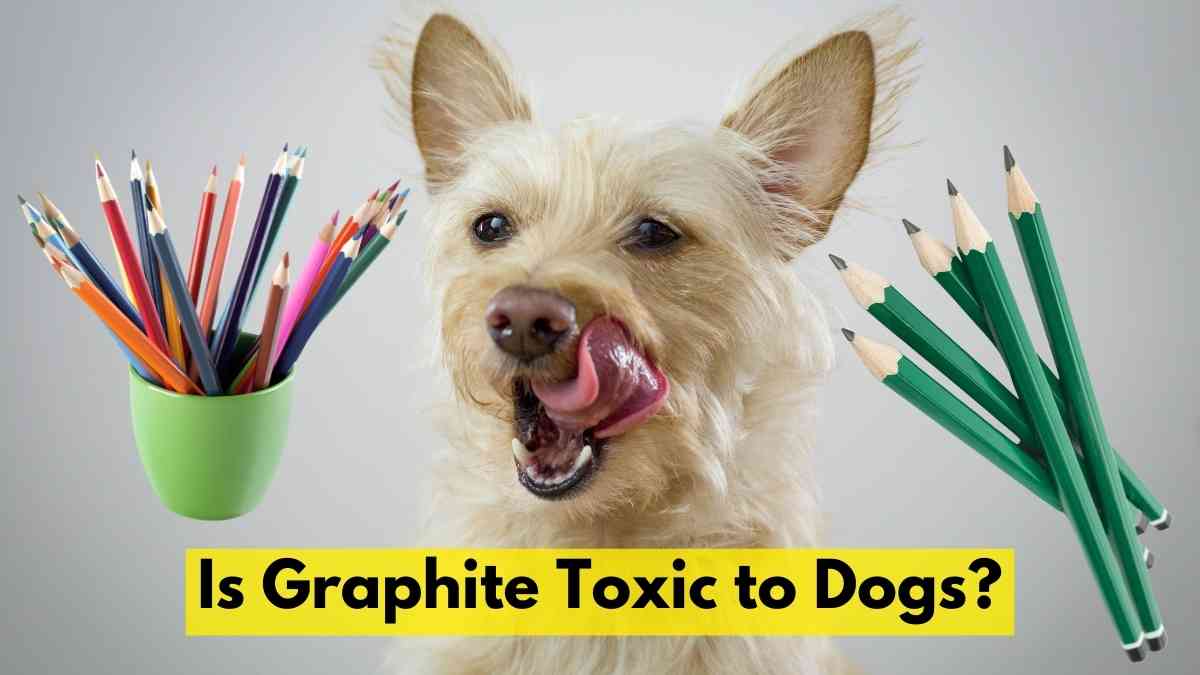Graphite is a commonly used material in various everyday items, from pencils to lubricants and even some industrial applications. While it’s a ubiquitous substance, many dog owners may wonder whether graphite poses any risks to their four-legged companions. In this article, we will explore the potential toxicity of graphite to dogs, what to do if your dog ingests graphite, and how to prevent such incidents from happening.
Table of Contents
What is Graphite?
Graphite is a form of carbon known for its slippery and lubricating properties. It is composed of layers of carbon atoms arranged in a hexagonal lattice structure, giving it its unique characteristics. This versatile material is found in pencils, lubricants, brake linings, and various other products used in daily life.
Is Graphite Toxic to Dogs?
Graphite is generally not highly toxic to dogs. While it’s not typically harmful in small quantities, ingesting larger amounts or objects containing graphite can lead to gastrointestinal distress and, in severe cases, potential blockages. If you suspect your dog has ingested graphite or graphite-containing items, it’s best to consult with a veterinarian for guidance on appropriate actions and treatment.
Potential Toxicity of Graphite to Dogs
A. Ingestion of Graphite by Dogs
- Sources of Exposure: Dogs can come into contact with graphite through various means, including chewing on pencils, ingesting lubricants, or even encountering graphite-containing objects in their environment.
- Chemical Composition of Graphite: The primary concern is whether graphite is toxic to dogs. Graphite itself is not considered highly toxic, but its impact on dogs can vary depending on factors like the amount ingested and the dog’s size.
B. Symptoms of Graphite Toxicity in Dogs
- Common Signs: Signs of graphite toxicity may include gastrointestinal distress, such as vomiting and diarrhea, as well as potential blockages if a significant amount is ingested.
- Effects on a Dog’s Health: While graphite is generally not lethal in small amounts, larger ingestions can lead to more severe issues, such as intestinal obstructions.
Treatment and Management
A. Immediate Actions
- If you suspect your dog has ingested graphite or any graphite-containing objects, contact your veterinarian immediately.
- Depending on the situation and your vet’s guidance, they may recommend inducing vomiting to remove the graphite from the dog’s stomach.
B. Veterinary Treatment
- Your veterinarian will conduct a thorough evaluation to determine the extent of graphite ingestion and its potential impact.
- Treatment options may include monitoring, supportive care, and, in severe cases, surgery to remove ingested graphite or any obstructions.
C. Preventive Measures
- To prevent graphite ingestion in the first place, keep pencils, lubricants, and other graphite-containing items out of your dog’s reach.
- Dog-proofing your environment by securing potentially harmful objects can go a long way in ensuring your pet’s safety.
Conclusion
In conclusion, while graphite is not highly toxic to dogs, it can still pose risks, especially if ingested in significant quantities. Responsible pet ownership involves keeping potentially harmful substances out of your dog’s reach and being aware of the signs of ingestion. If you suspect your dog has ingested graphite, contact your veterinarian promptly for guidance and treatment. By taking precautions and staying informed, you can help keep your furry friend safe from potential hazards like graphite in your home.
You May Also Like:
My Dog Ate a Pen: What to Do and How to Prevent It
What to Do If Your Dog Eats a Pencil: Tips for Keeping Your Pet Safe

